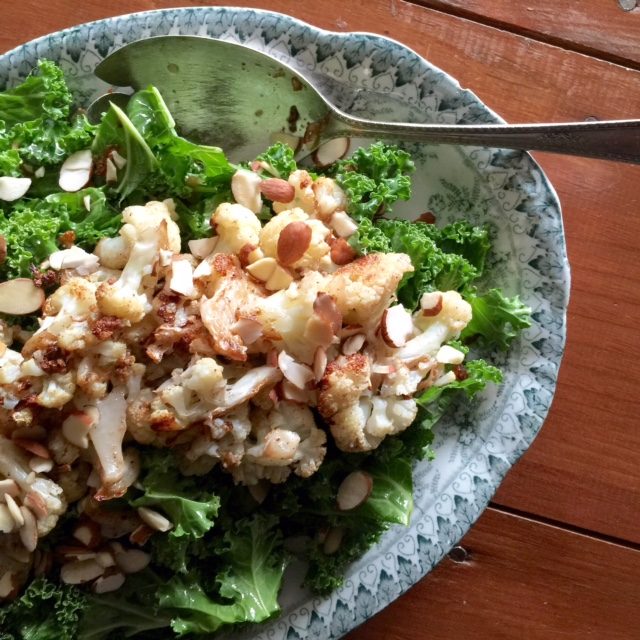wilted kale salad & warm shallot vinaigrette

“How a cookbook is marked, by handwritten notes or physical evidence that a recipe was prepared over and over, tells much about the intent and life of the cook.” –Kim Severson
Perhaps this quote is the best place to begin the discussion about recipe writing. I spend my days creating a myriad of recipes, no cuisine is off-limits, and I get an extra special thrill when pushed to the perimeters of my comfort zone, as with the project I recently wrapped up. When it comes to cooking, I’m a “can do” girl all the way.
At some point my job ends, and yours begins. The recipes leave the comfort and care of my kitchen, floating into yours, and it is you, the reader that gives them life. So, yes, perhaps this is just the right point at which to ponder what is considered good recipe writing. I firmly believe it is an art to translate a bunch of ingredients and technique into layman’s terms, so cooks of any level can successfully make them at home. The job of the recipe writer is to weave the wings with which homecooks need to take flight.
There are some in my line of work who think detailed explanations are too cumbersome, leaving no room for the homecook to make it their own. Trust me on this when I say that while we’ve gained a generation of curious, knowledgable cooks, there are still many people out there who freeze with fear at the sight of a stove. That’s where a calming voice, friendly tone, and well-written recipe are essential.
When I talk about this skill at conferences, I use this as an example.
Heat the oil in a skillet over medium heat.
Heat the oil in a 10-inch skillet over medium heat until shimmering.
One description infers experience, and the other one offers clarity to novice cooks (pan size and a visual cue for what heated oil looks like exactly). Both deliver the same results. I love using headnotes, and sidebars when working on articles to help nudge readers to dip a toe towards improvisation. And you can surely be creative within writing the recipe, itself. When it comes to bones of the recipe, though, I always prefer to be inclusive when writing them, even it irks my colleagues. The tides may change, cooks’ comfort levels will change, but a well-written recipe will always stand the test of time.
And as for those splattered, marked up cookbooks—they are treasures, indeed. My girls, and their children, will have plenty of them to peruse long after I’ve sauteed my last batch of onions.
This recipe is now part of my new site, Simmering. Join thousands of other paid subscribers now for only $5/month or $30/year (that’s six months free!).
